Generating B2B Intent Contact Data After Evaluating GDPR and CAN-SPAM Compliance
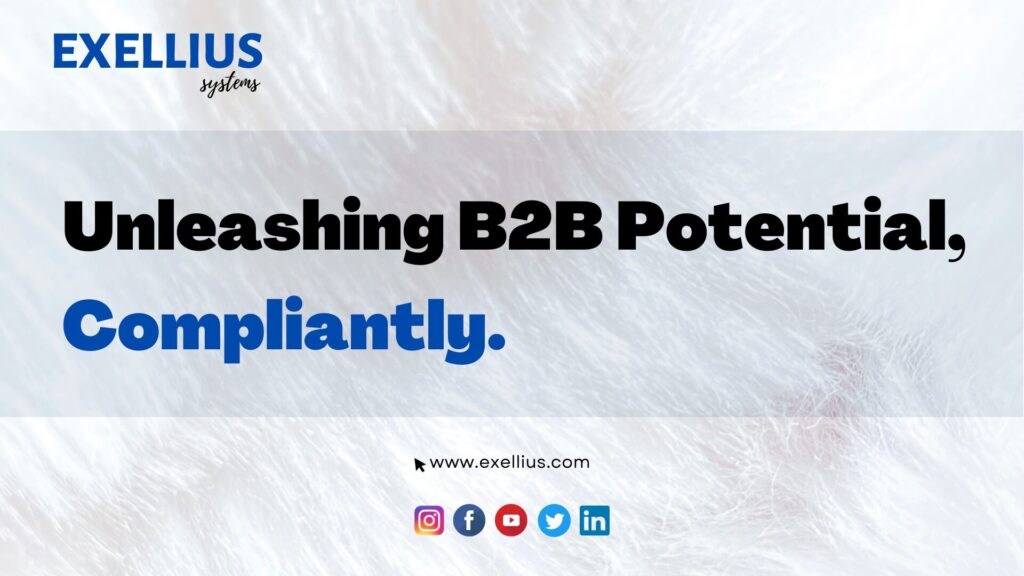
B2B Intent Contact Data
Why GDPR, CAN-SPAM, and ISO are Crucial for the B2B Industry
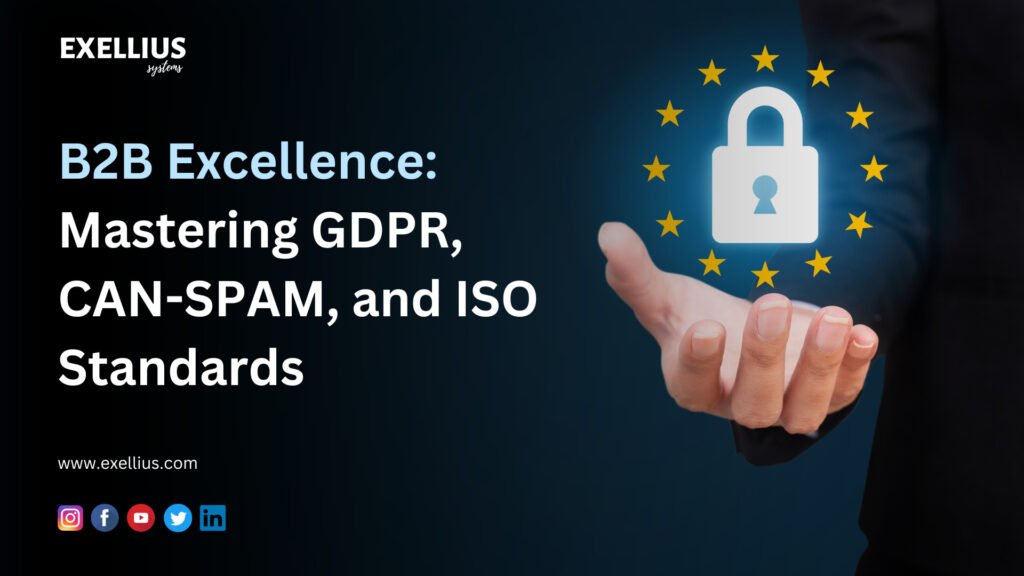
GDPR-CAN-SPAM-ISO
Exellius Systems Expands its Global Presence with New Office in Dover, DE

Dover, DE – June 8, 2023 – Exellius Systems, a leading provider of cutting-edge technology solutions, is pleased to announce the opening of its new office located at 8 The Green Suite #15256, Dover, DE 19901, United States. This expansion is a testament to Exellius Systems’ rapid growth and commitment to serving its clients more effectively. As Exellius Systems Continues to Grow Rapidly The new Dover office marks an important milestone for Exellius Systems as it seeks to broaden its reach and strengthen its presence in the United States. By establishing a strategic location in Dover, the company aims to provide enhanced support and solutions to its growing customer base in the region. The office’s convenient location and state-of-the-art facilities will enable Exellius Systems to collaborate closely with clients. Fostering innovation and accelerating business growth. “We are thrilled to open our new office in Dover, DE,” said Atharva G, Director of Exellius Systems. “This expansion not only allows us to better serve our existing clients in the United States but also positions us for further growth and expansion opportunities. We are confident that this move will help us deliver exceptional services and solutions to our valued customers.” Exellius Systems‘ expansion in Dover is part of its broader global growth strategy. The company has seen tremendous success in recent years, fueling its ambition to establish a stronger presence. In international markets. With plans to open new offices in the United Kingdom in the near future, Exellius Systems is poised to bring its industry-leading technology solutions to clients across Europe. The decision to expand into the UK market reflects Exellius Systems’ commitment to staying at the forefront of innovation and serving its global clientele. The new UK offices will allow the company to leverage the rich talent pool and technological advancements in the region, enabling it to provide bespoke solutions tailored to the specific needs of the European market. It remains dedicated to delivering exceptional value and empowering organizations with transformative technology. By expanding its physical presence, the company aims to forge stronger relationships with its clients, foster collaboration, and create new opportunities for success. About Exellius Systems: Exellius Systems is a leading provider of cutting-edge technology solutions, offering a wide range of services to empower organizations in achieving their digital transformation goals. With a focus on innovation and client success, Exellius Systems combines expertise in software development, artificial intelligence, and data analytics to deliver impactful solutions across various industries. For media inquiries, please contact: Atharva Gandhure Media Partnership Director Exellius Systems Email: atharva.g@exellius.com Phone: +1 123-456-7890 Note: The information provided in this press release is accurate at the time of release (June 8, 2023). Please refer to the Exellius Systems website for the latest updates and announcements.
Account Based Marketing vs. Demand Generation
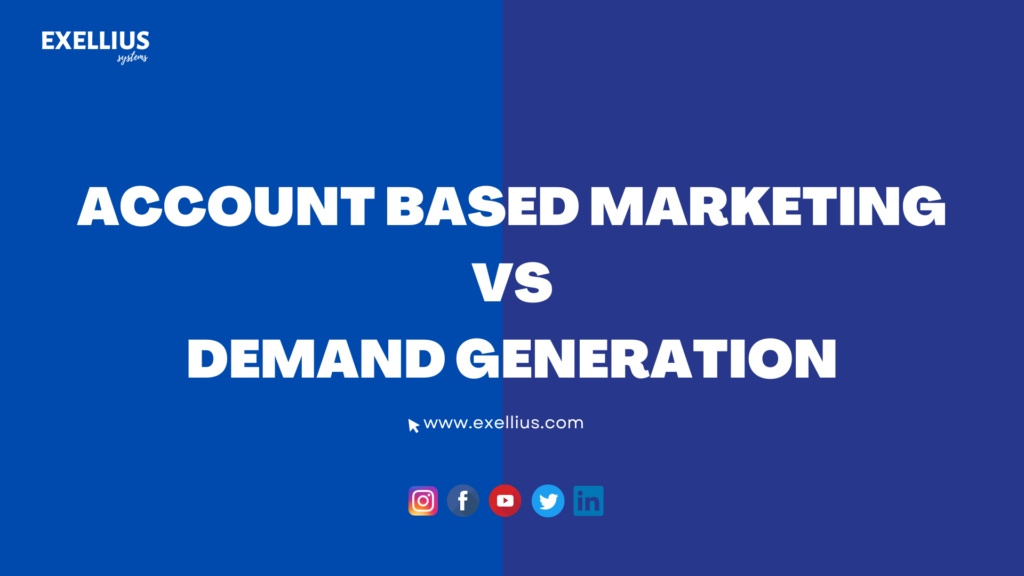
Outline Account Based Marketing vs. Demand Generation Account-Based Marketing (ABM) and Demand Generation are two popular marketing strategies used by businesses to drive growth and achieve their marketing objectives. While both approaches aim to generate leads and revenue, they differ in their focus, targeting methods, and overall approach. In this article, we will delve into the nuances of ABM and Demand Generation, understand their key components, and explore how they can be effectively utilized to maximize results. Understanding Account-Based Marketing (ABM) Definition and Purpose Account-Based Marketing (ABM) is a strategic approach that focuses on targeting specific high-value accounts and treating them as individual markets. Unlike traditional lead generation methods that cast a wide net to capture potential leads, ABM aims to engage and nurture a select group of key accounts by delivering personalized, tailored experiences throughout the customer journey. The goal of ABM is to establish strong relationships with target accounts, increase customer lifetime value, and drive revenue growth. Key Components of ABM ABM involves a multi-dimensional approach that requires collaboration between marketing and sales teams. Key components of ABM include: Exploring Demand Generation Definition and Purpose Demand Generation refers to the process of creating awareness, interest, and demand for a company’s products or services. It focuses on generating leads and nurturing them through the marketing funnel until they are ready to make a purchase. Demand Generation strategies aim to attract a wide audience, educate them about the brand’s value proposition, and engage them through various marketing channels. The ultimate goal of demand generation is to drive conversions and revenue growth. Key Components of Demand Generation Demand Generation encompasses a range of activities and tactics designed to capture and nurture leads. Key components of demand generation include: Differentiating Account Based Marketing VS Demand Generation While both ABM and Demand Generation aim to generate leads and revenue, there are distinct differences between the two strategies. Targeting Approach ABM focuses on targeting a select group of high-value accounts, treating them as individual markets. On the other hand, Demand Generation takes a broader approach by targeting a wide audience and nurturing them through the marketing funnel. Focus on Accounts vs. Leads ABM places emphasis on building relationships with key stakeholders within target accounts. It prioritizes quality over quantity and aims to deepen engagement with a smaller number of high-potential accounts. In contrast, Demand Generation focuses on generating and nurturing leads, casting a wider net to capture a larger pool of potential customers. Personalization and Customization ABM is highly personalized and customized. It tailors marketing messages, content, and campaigns to address the specific needs and pain points of individual target accounts. Demand Generation also utilizes personalization but on a broader scale, aiming to resonate with a larger audience segment. Measurement and ROI Both ABM and Demand Generation require measurement and tracking of key metrics to assess their impact. However, the metrics differ. ABM focuses on pipeline acceleration, deal velocity, and revenue generated from targeted accounts. Demand Generation measures metrics such as website traffic, conversion rates, and marketing-qualified leads. Choosing the Right Strategy for Your Business When deciding between ABM and Demand Generation, it’s essential to consider the specific needs and goals of your business. Here are some factors to consider: Considerations for ABM Considerations for Demand Generation Combining ABM and Demand Generation While ABM and Demand Generation are distinct strategies, they can be complementary and used together to maximize results. Integrating both approaches allows businesses to leverage the benefits of personalized account-based targeting while still capturing a wider audience. Here are some benefits and best practices for integrating ABM and Demand Generation: Benefits of Integration Best Practices for Integration By combining ABM and Demand Generation, businesses can take advantage of the strengths of each strategy and achieve a comprehensive marketing approach that drives revenue growth and maximizes ROI. Conclusion Account-Based Marketing (ABM) and Demand Generation are two distinct but valuable marketing strategies. While ABM focuses on personalized engagement with high-value accounts, Demand Generation targets a broader audience to generate leads and drive conversions. Both approaches have their benefits and can be integrated to maximize results. Understanding your business goals, target audience, and available resources will help you choose the right strategy or combination of strategies for your organization’s success. FAQs 1. What is the main difference between ABM and demand generation? ABM focuses on targeting specific high-value accounts and personalizing marketing efforts for them, while demand generation aims to attract and engage a broader audience to generate leads. 2. Can ABM and demand generation be used together? Yes, ABM and demand generation can be integrated to create a comprehensive marketing strategy that combines personalized account targeting with broader lead generation efforts. 3. How do you measure the success of ABM and demand generation? ABM success can be measured through metrics like pipeline acceleration, deal velocity, and revenue generated from target accounts. Demand generation success can be measured through metrics like website traffic, conversion rates, and marketing-qualified leads. 4. Which strategy is more suitable for B2B companies? Both ABM and demand generation are valuable for B2B companies. The choice depends on factors like target account value, sales cycle length, and available resources. Some B2B companies may find a combination of both strategies to be the most effective approach. 5. How can I get started with ABM or demand generation? To get started with ABM or demand generation, assess your business goals, target audience, and available resources. Develop a strategy, align your marketing and sales teams, and leverage relevant tools and technologies to implement your chosen approach effectively. Know more about our Media Partner: Media Martech
How to Boost Your B2B Sales with AI
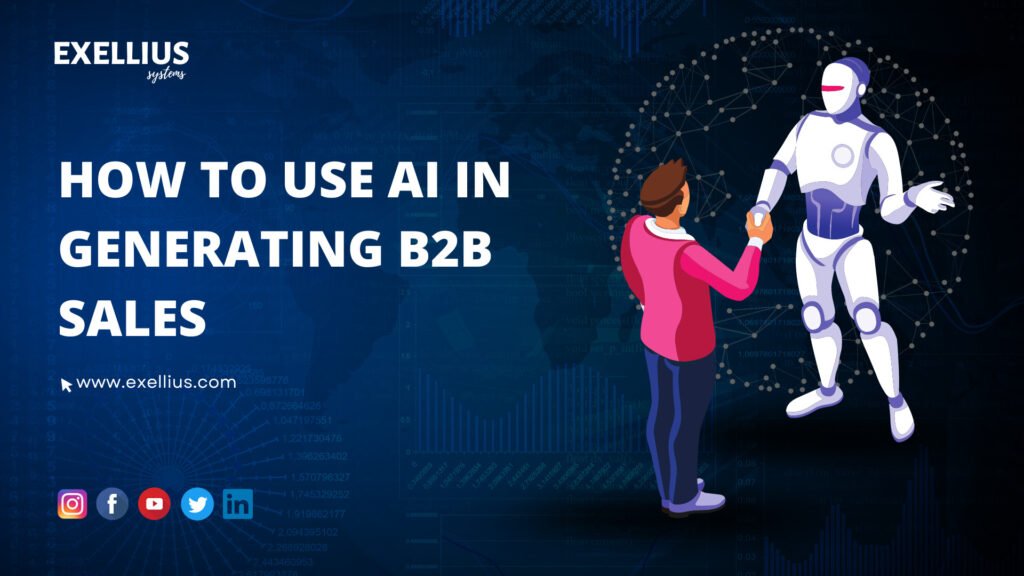
Introduction In today’s fast-paced business environment, companies need to leverage every tool available to stay ahead of the competition. One of the most powerful tools at your disposal is b2b sales artificial intelligence (AI), which can help you automate and streamline your sales process to drive more revenue and improve customer satisfaction. But how exactly can you use AI in generating B2B sales? In this guide, we’ll explore some of the most effective strategies for leveraging AI. To optimize your sales process and maximize your revenue. Whether you’re just getting started with AI or you’re looking to take your existing AI capabilities to the next level, you’ll find plenty of valuable insights and actionable tips in this guide. How to use AI in Generating B2B Sales Here are some of the most effective strategies for using AI to generate B2B sales: 1. Lead Generation One of the most important aspects of B2B sales is generating high-quality leads. With AI, you can streamline and optimize your lead generation process to identify the most promising prospects and nurture them into paying customers. Some of the most effective AI-powered lead generation strategies include: 2. B2B Sales Forecasting Another key area where AI can make a big impact is sales forecasting. By analyzing historical sales data and customer behavior, AI can help you predict future sales trends and identify opportunities for growth. Some of the most effective AI-powered sales forecasting strategies include: 3. B2B Sales Automation AI can also help you automate many aspects of your sales process, from lead nurturing to customer retention. By using AI-powered tools and platforms, you can free up your sales team to focus on high-value activities while AI takes care of the routine tasks. Some of the most effective AI-powered sales automation strategies include: 4. Personalization Finally, AI can help you personalize your sales process to better meet the needs and preferences of individual customers. By analyzing customer data and behavior, AI can help you tailor your messaging, content, and offerings to each customer’s unique needs and preferences. Some of the most effective AI-powered personalization strategies include: FAQs Q: Is AI really necessary for B2B sales? A: While AI is not strictly necessary for B2B sales, it can provide a significant competitive advantage by automating and streamlining various aspects of the sales process. By leveraging AI-powered tools and platforms, you can generate high-quality leads, forecast sales trends, automate routine tasks, and personalize your sales process to better meet the needs and preferences of your customers. Q: How can I get started with using AI for B2B sales? A: Getting started with AI for B2B sales can seem daunting, but there are many resources available to help you get started. Consider attending webinars or conferences on the topic, or hiring a consultant or agency that specializes in AI-powered sales. Additionally, many AI-powered sales tools and platforms offer free trials or demos, allowing you to test them out and see how they can benefit your business. Q: What are some common challenges associated with using AI for B2B sales? A: While AI can provide many benefits for B2B sales, there are also some challenges associated with its use. These include the need for specialized technical expertise, the risk of relying too heavily on AI and losing the human touch, and concerns around data privacy and security. To overcome these challenges, it’s important to work with experienced AI professionals, establish clear guidelines and protocols around AI usage, and prioritize data privacy and security in all aspects of your sales process. Q: How can AI help with customer retention? A: AI can help with customer retention by analyzing customer data and behavior to identify customers who are at risk of churning, and taking proactive steps to engage with them and address their concerns. AI-powered customer retention tools can also provide personalized recommendations and incentives to encourage customers to stay loyal to your brand. Conclusion AI has the potential to revolutionize the B2B sales process, helping companies automate and streamline various aspects of sales to generate more revenue and improve customer satisfaction. By leveraging AI-powered lead generation, sales forecasting, sales automation, and personalization tools. You can optimize your sales process and stay ahead of the competition. With the right strategies and tools in place, you can take your B2B sales to new heights and achieve your business goals with greater efficiency and effectiveness.
Top 10 B2B Marketing Trends to Follow in 2023
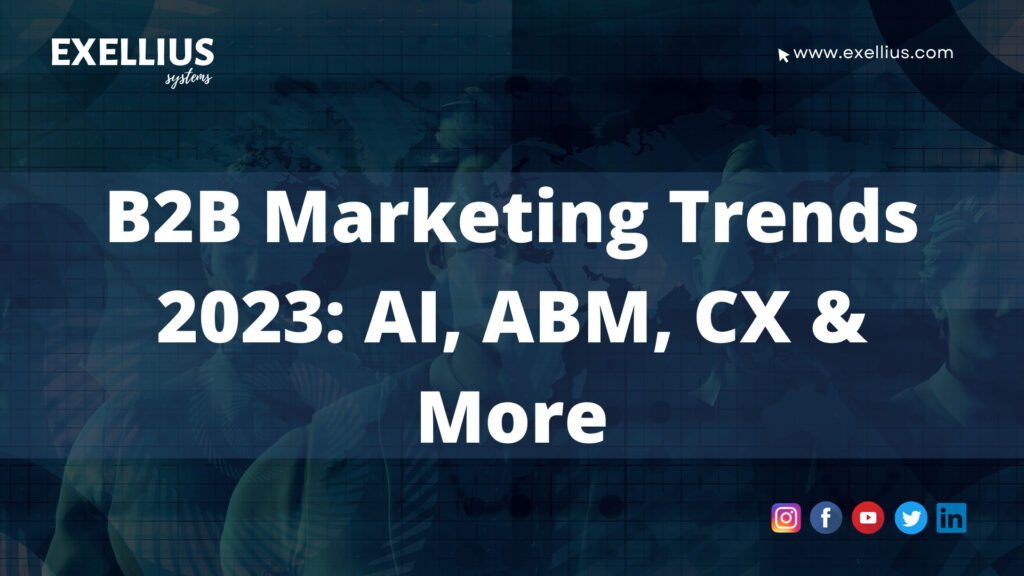
In today’s fast-paced digital world, creating high-quality content is essential for businesses to engage with their target audience and drive traffic to their website.
Content Syndication by Email Marketing
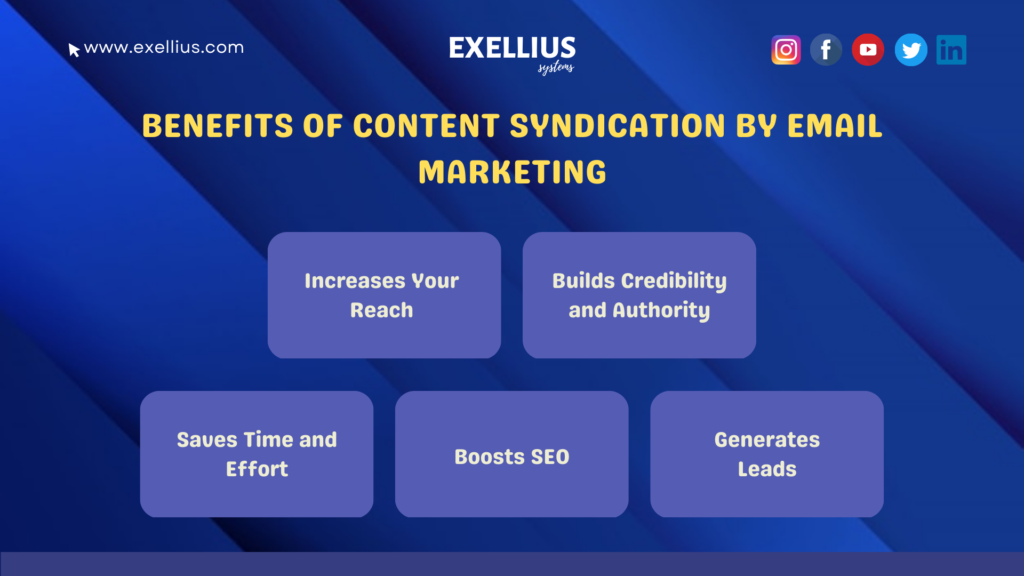
In today’s fast-paced digital world, creating high-quality content is essential for businesses to engage with their target audience and drive traffic to their website.
Simplify B2B Lead Gen with Marketing Automation in 5 Steps

Simplify B2B Lead Generation with Marketing Automation Marketing automation has been a game-changer for businesses looking to streamline their marketing efforts and drive revenue growth. However, implementing marketing automation can be a daunting task for many B2B Lead Generation businesses, especially when it comes to lead generation. In this blog, we’ll explore how marketing automation can be simplified for B2B lead generation and how businesses can get started with it. Firstly, let’s define what marketing automation is. Marketing automation refers to the use of software tools to automate repetitive marketing tasks such as email marketing, social media marketing, lead nurturing, and lead scoring. Marketing automation allows businesses to target their audience with personalized messages at the right time, improving the efficiency and effectiveness of their marketing efforts. Few ways to simplify marketing automation for B2B lead generation: Define your goals: Before you start implementing marketing automation, it’s essential to define your goals. What do you want to achieve with marketing automation? Do you want to generate more leads, nurture existing leads, or close more deals? Once you have a clear understanding of your goals, you can select the right marketing automation tools to help you achieve them. Create a lead generation funnel: A lead generation funnel is a step-by-step process that takes your prospects from the first point of contact to becoming a customer. You can use marketing automation to automate this process, making it easier to manage and scale. Start by identifying the different stages of your funnel, such as awareness, consideration, and decision, and create targeted messages for each stage. Segment your audience: One of the biggest advantages of marketing automation is the ability to segment your audience based on their behavior and interests. Segmenting your audience allows you to deliver more personalized messages that resonate with them, increasing the chances of conversion. You can segment your audience based on factors such as demographics, behavior, interests, and engagement. Use lead scoring: Lead scoring is a way to rank your leads based on their level of engagement and interest in your product or service. By using lead scoring, you can prioritize your leads and focus your marketing efforts on the most promising ones. You can set up lead scoring rules based on factors such as website visits, email opens, and form submissions. Integrate your marketing automation tools: To simplify marketing automation for B2B lead generation, it’s crucial to integrate your marketing automation tools with your CRM system. Integrating your tools allows you to track your leads throughout the sales funnel, from the first point of contact to becoming a customer. This integration also ensures that your sales and marketing teams are aligned and working towards the same goals. Some facts and numbers related to marketing automation and B2B lead generation: According to Grand View Research, the global marketing automation market size is expected to reach USD 19.84 billion by 2027, growing at a CAGR of 13.6% from 2020 to 2027. According to Forrester Research, companies that implement marketing automation increase their sales pipeline by an average of 10%. A study by Lenskold Group found that businesses that use marketing automation to nurture prospects experience a 451% increase in qualified leads. According to HubSpot, personalized calls-to-action convert 42% more visitors into leads than untargeted calls-to-action. A survey by Ascend2 found that 63% of marketers consider generating leads and traffic to be their biggest marketing challenge. According to Pardot, B2B marketers who implement marketing automation see a 70% improvement in lead-to-opportunity conversion rates. A study by Salesforce found that companies that use marketing automation generate 2.5 times more leads than those that don’t. According to Marketo, businesses that use marketing automation to nurture prospects experience a 20% increase in sales opportunities. In conclusion, marketing automation can be simplified for B2B lead generation by defining your goals, creating a lead generation funnel, segmenting your audience, using lead scoring, and integrating your marketing automation tools with your CRM system. By simplifying marketing automation, B2B businesses can streamline their marketing efforts, generate more leads, and close more deals. Contact us for more details
Types of Market segmentation for 2023
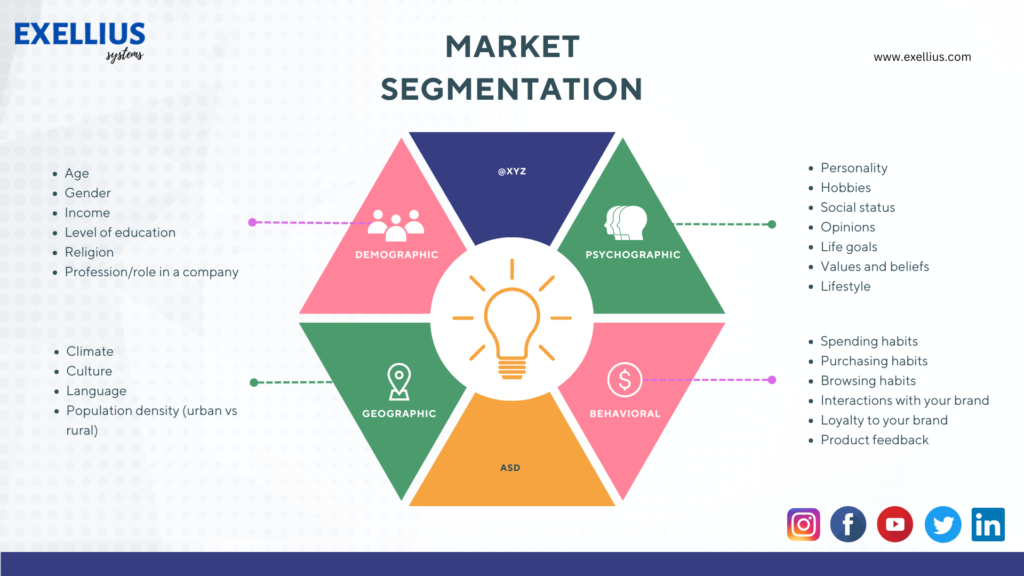
The Best 4 types of Market segmentation for 2023 Any effective long-term marketing plan is built on market segmentation Get to the root of your clients’ purchasing motivations by segmenting your market to better satisfy their individual demands of market segmentation. This will help you get the most out of your marketing budget. 77% of marketing ROI, according to research, comes from segmented, targeted, and triggered initiatives. Therefore, if your marketing initiatives aren’t working, conduct extra market research to learn more about each segment’s unique characteristics. The ability to provide individualized customer experiences is one of the ways market segmentation tactics assist your firm generate more cash. Since you can segment your audience using the best personalization tools, you may: Drive more email and SMS leads Lift website conversion rates Improve average order values Increase customer lifetime value In this blog, I’ll walk you through the four main types of market segmentation: Demographic Psychographic Geographic Behavioral What is market segmentation? You can use the market segmentation strategy to break down your consumer base into smaller groups based on traits they have in common, such as age, income, interests, and location. Segmentation is used to focus marketing efforts on the customers that fit your ideal customer profile (ICP), or those who are most likely to purchase your good or service. For instance, a consumer at an organic food store is probably going to have some, if not all, of the following traits: Gender: Male or Female Age: 25-44 Earnings: $100,000+ Life stage: Childless homeowner Interests: Sport, sustainability, and a healthy diet Use message that resonates with a market segment made up of clients who have those characteristics rather than squandering money on campaigns that target a wide slice of the market. Additionally, think about which channels are most likely to lead to high interaction. A Pinterest campaign promoting goods with sustainable components would be a smart move for this made-up organic food store to attract potential customers. Why Pinterest instead of another social media platform? In fact, up to 80% of Millennial women and 40% of Millennial men use Pinterest, and 9 out of 10 Pinners use it to browse for shopping ideas. 1. Demographic segmentation: The who Demographic segmentation, one of the most basic yet successful types of segmentation, is widely employed by D2C ecommerce firms. Using demographic segmentation, you may divide your audience and develop consumer personas based on factual data like: Age Gender Income Level of education Religion Profession/role in a company You can target your audience with goods that fit within their spending limits, for instance, if you segment your audience depending on the income of your clients. This simple segmentation method comes with three major benefits if you own a small business or are new to online shopping: It’s easy to collect information It’s simple to measure & analyze It’s cost-effective A manufacturer of luxury products, collaborated with Exellius to display a variety of offers on their website. With a Father’s Day promotion providing a free gift to consumers purchasing above £200—a threshold that took into account the spending preferences of Montblanc’s target audience—they increased conversions by 118%. 2. Psychographic segmentation: The why Psychographic segmentation is the practice of putting people in groups based on shared psychological traits, political beliefs, and objectives. For instance, you may categories clients based on: Personality Hobbies Social status Opinions Life goals Values and beliefs Lifestyle Psychographics is a harder sector to identify because these traits are arbitrary, but it’s also the most valuable one. The finest sources of information for psychographic segmentation are your audience analytic tools and social media, but you should also employ surveys, interviews, and focus groups to further your understanding of your target audience in this group. You can gain a thorough understanding of the preferences, requirements, wants, and loves of your customers through psychographic segmentation. Then you can develop marketing initiatives that speak to their psychographic profile. 3. Geographic segmentation: The where Customers are categorised according to their residences and shopping locations through the process of geographic segmentation. Generally speaking, residents of the same city, state, or zip code have comparable demands, perspectives, and cultural preferences. The main benefit of geographic segmentation is that it offers perception into what the location of your consumers indicates about a number of geographically specific factors, such as their: Climate Culture Language Population density – (urban vs rural) As with any market segmentation techniques, you’ll need to do a data analysis to determine how each variable affects your clients’ purchasing decisions. People who live in colder climates, for instance, are probably interested in purchasing winter apparel and home heating equipment. 4. Behavioral segmentation: The how The technique of categorizing clients based on typical behavior’s they display when interacting with your business is known as behavioral segmentation. You can divide your audience into groups for this form of segmentation based on: Spending habits Purchasing habits Browsing habits Interactions with your brand Loyalty to your brand Product feedback By gathering this factual information from your website analytics, you may spot trends in your consumers’ behaviour that can be used to anticipate how they will interact with your business going forward. After that, you can use this theory to offer tailored recommendations that take your consumers’ wants into account. For instance, Spotify offers daily mixes to its customers depending on the genres and artists they’ve previously listened to. At Exellius, we deliver extremely relevant and targeted campaigns based on a variety of activities, such as: Number of sessions to your website Number of pages visited Time spent on site URLs visited Page types visited Exit intent Inactivity Shopping cart value Campaign history Referral sourceFor More contact us now Follow us on LinkedIn
Clients who are ready to buy with Intent data

Find clients who are ready to buy and start with them. Determine decision-makers who are likely to buy in advance with Intent Data, comprehend their reasons, and make wise choices about how to persuade them. Increase engagement by 16%, closing rates by up to 79%, and customer reach by using intent data. Intent data gives you the power to do just-in-time targeting to offer prospects exactly what they need, right when they’re ready to buy. Utilize intent data to improve your sales and marketing efforts. Lead Generation Increase the number of quality leads entering the funnel by identifying those that fit your ideal customer profile, are prepared to make a purchase, and other criteria utilising intent signals. Account-based Marketing Find booming firm locations within a target list to pinpoint potential business buyers at the ideal time. Just-in-Time Outreach Learn sooner and get in touch with people more quickly when they require what you’re selling. Get access to intent-based leads when you need them to effectively sell to only the customers who are ready to make a purchase. Customer Alerts In order to be prepared and willing to assist, keep an eye on online behaviour and get alerted when a prospect signals that the timing is perfect for a purchase. Activation By cross-referencing them with the purpose data that is already present in Data Axle’s databases, you can activate or re-engage consumers and prospects in lists that you have rented, licensed, bought, or assembled yourself. Utilize intent data however you choose. Want to learn more? We’d love to chat email at james.vargees@exellius.com Visit Exellius Systems Blogs page for more content like this Do follow us on LinkedIn



